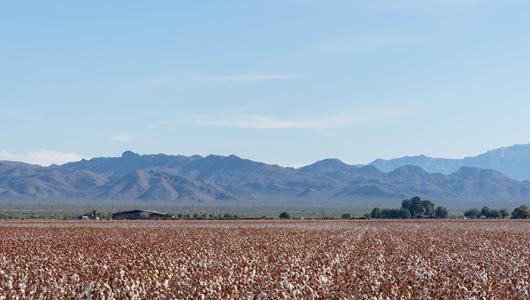How can we make improvements to federal emergency conservation programs like the Emergency Conservation Program and Emergency Forest Restoration Program? The answer is talking to the people who utilize the programs, as well as the federal employees who administer them.
Over two days, I visited with USDA Farm Service Agency staff at the county and state level from Georgia and Florida, and the producers and private forest landowners they assist. Hurricane Michael devastated agricultural operations in both states in October 2018. Many forest landowners lost entire stands of mature longleaf pines and decided to replant for future generations, water quality, and benefits to wildlife. In terms of USDA assistance, the goals of this trip were to see what worked, what didn’t, and to look for recommendations to improve our assistance.

Overcoming Obstacles
Many producers enrolled their operations in ECP following Hurricane Michael to help remove debris and repair fences. The program provides assistance to farmers and ranchers to repair farmland damage caused by natural disasters and to help put in place methods for water conservation during severe drought. While landowners utilize ECP for cleanup, EFRP helps owners of non-industrial private forests restore the health of their damaged forests after natural disasters.
When meeting with staff, we discussed the program procedures and administrative issues that occur when dealing with such a significant storm. Most county offices across the country infrequently administer these emergency programs. However, in areas of frequent storms or wildfires, we are seeing more utilization. Often when storms occur, the power is out for up to two weeks, impacting producers, employees, and the community as a whole. In this digital age that means reverting to paper documents. Our employees are also members of the community, so they may also be helping gather cattle, repair fences, harvest/salvage crops, or just care for their family and others following the disaster.
A common challenge heard from staff and producers is getting an accurate assessment for the application right after the disaster. This may happen for a variety of reasons, including the over or underestimate of the actual scope of damage due to the shock of the situation, and not being able to access all property due to downed trees, washed out roads, etc. In the case of trees, not knowing if they will recover or must be taken down also plays a part. Pine trees in particular may have delayed mortality due to storm related injury, which may not be apparent for as long as five years.

How Can We Improve?
The potential development of a damage checklist to use during the application process was recommended by the county and state office staff. This could serve as a guide to think about all types of damage that may have occurred and what activities can be cost-shared by the programs.
Customers were grateful and complimented the helpfulness of the local staff. Some of their suggestions for improvement were to reduce the time between application and payment and limit the number of signatures required.
Overall, we were impressed by the resiliency of both the producers we spoke to, as well as our staff, most of whom also had damage to take care of on their property. In every disaster, USDA staff stands ready and eager to help those impacted. For more information about USDA’s disaster resources, visit farmers.gov/recover.
Bill Beam is USDA’s Deputy Administrator for Farm Programs for the Farm Service Agency.


